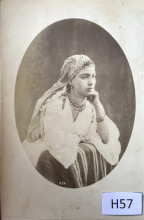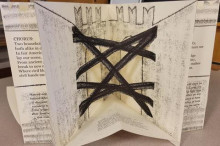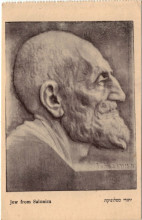Julie Herrada
Library Blogs
Showing 451 - 460 of 1968 items

Join the Special Collections Research Center next Tuesday (14 December) at 4 pm EST for our final After Hours virtual open house of the term exploring materials from the Joseph A. Labadie Collection relating to prison abolition, prisoner support, and political prisoners.

Enjoy a portrait from a recently acquired photograph album with albumen print photographs featuring portraits of people and landscapes of Algeria and Tunisia.

Join us online this Thursday 18 November at 7 pm EST for a virtual walk through a selection of artists' books preserved in the Special Collections Research Center!

This is a wonderful, complex historical novel about a group of Smith College graduates who go to France during World War I to give aid to French villagers whose homes were devastated by the German invasion. The novel focuses on Kate and Emmie, two friends from very different backgrounds, and how the tensions created during their time in the war zone threaten to destroy their friendship. Author Lauren Willig paints an unforgettable portrait of life in the war-torn French countryside.

Explore a recently acquired item from our new Jewish Salonica Postcard Collection.

We have a few exciting things to announce. Firstly: Starting on Monday November 8th, we'll be expanding our hours to Monday-Friday 1-7pm. Secondly: We'll now be open for same-day online reservations and walk-in reservations. Thirdly: The CVGA is open despite most of the Duderstadt Center basement being closed. Lastly: We have new games! So come visit us.

Join the Special Collections Research Center next Tuesday (9 November) at 4 pm EDT for our third After Hours virtual open house of the term exploring a selection of manuscripts containing the sacred texts of Judaism, Christianity, and Islam!

As we are in the middle of leaves changing, trips to the pumpkin patch, horror movie marathons, and perfect sweater weather... I present a book collection that is there for all your fall book reading needs.
•
Creating wall all with custom 3D printed flush mount

Join us online next Thursday, 14 October at 11 am EDT for the next event in the series Virtual Encounters in Book History -- "Nineteenth Century Fashion in Print: Masculine Intimacy, Feminine Historical Consciousness, and Ephemerality in Commodity Culture"